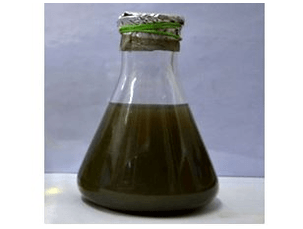BACTERIOLOGICAL CHARACTERISTICS OF DIABETIC FOOT INFECTION AND SUSCEPTIBILITY OF MULTIRESISTANT ISOLATES TO HYDRAULIC EXTRACTS FROM ALLIUM SATIVA, ALLIUM CEPA AND CANNABIS SATIVA
Keywords:
Allium cepa, Allium sativum, Antibacterial resistance, diabetic foot infection, Cannabis sativa, plant extractsAbstract
Background and objective : Diabetic foot infection is one of the most serious complications of diabetes and its persistence is the result of the ineffectiveness of antibiotic therapy due to the exponentially increasing of antibiotic resistant bacteria. The study aimed at investigating the antibacterial effect of the aqueous extract of some plants on the antibiotic resistant bacteria isolated from diabetic foot wound infections.
Methods : A 6-months cross-sectional study from July 2021 to January 2022 at the Yaoundé Central Hospital, was undertaken with diabetic foot wound patients. All samples were appraised to determine presence of infectious agents using standard methods for isolation and identification of bacteria. Subsequently, Antibiotic resistance was done using Kirby-Bauer disc diffusion methods. Finally, extracts of Cannabis sativa leaves, Allium cepa and Allium sativum bulbs were obtained with water and their antibacterial activities were evaluated by the microdillution method on liquid medium.
Results : 20 patients whom 14 men were included, with a sex ratio of 2.33, and their mean age was 52.5±9.6 years. 60% of these patients presented wounds in grade III and were of several types : purulent (48.57%), moist (31.43%) and dry (20%). 35 strains were isolated. The predominant GPB were S. aureus (34.29%) followed by Coagulase-negative Staphylococcus (14.29%), and Bacillus Spp (2.86%). Among the GNB, Pseudomonas aeruginosa (11.46%), Serratia Spp. (8.56%), Escherichia coli (8.56%), Enterobacter Spp. (5.71%), Proteus Spp. (5.71%), Klebsiella Spp., Yersinia Spp. and Salmonella Spp. in proportions of 2.86% each. A high rate of antibiotic resistance was recorded for Oxacillin (100%), Vancomycin (83.34%) and Augmentin (55.56%). Sensitivity tests on liquid medium showed that MIC ranged between 3.12-25.00 mg/mL, 6.25-25.00 mg/mL and 1.86-25.00 mg/mL respectivelly for A. sativa, A. cepa and C. sativa. Alliums were much more active on GNB. Although these results are low, they could be an alternative for the diabetic foot infection treatment.
Conclusion : Alliums were much more active on GNB Although these results are low, they could be an alternative for the diabetic foot infection treatment.

Peer Review History:
Received: 3 February 2022; Revised: 7 March; Accepted: 14 April; Available online: 15 May 2022
Academic Editor: Dr. Sally A. El-Zahaby , Pharos University in Alexandria, Egypt, sally.elzahaby@yahoo.com
, Pharos University in Alexandria, Egypt, sally.elzahaby@yahoo.com
Reviewers:
 Dr. Sangeetha Arullappan, Universiti Tunku Abdul Rahman, Malaysia, sangeetha@utar.edu.my
Dr. Sangeetha Arullappan, Universiti Tunku Abdul Rahman, Malaysia, sangeetha@utar.edu.my
 Prof. Dr. Ali Gamal Ahmed Al-kaf, Sana'a university, Yemen, alialkaf21@gmail.com
Prof. Dr. Ali Gamal Ahmed Al-kaf, Sana'a university, Yemen, alialkaf21@gmail.com
Downloads

Published
How to Cite
Issue
Section

This work is licensed under a Creative Commons Attribution-NonCommercial 4.0 International License.









 .
.